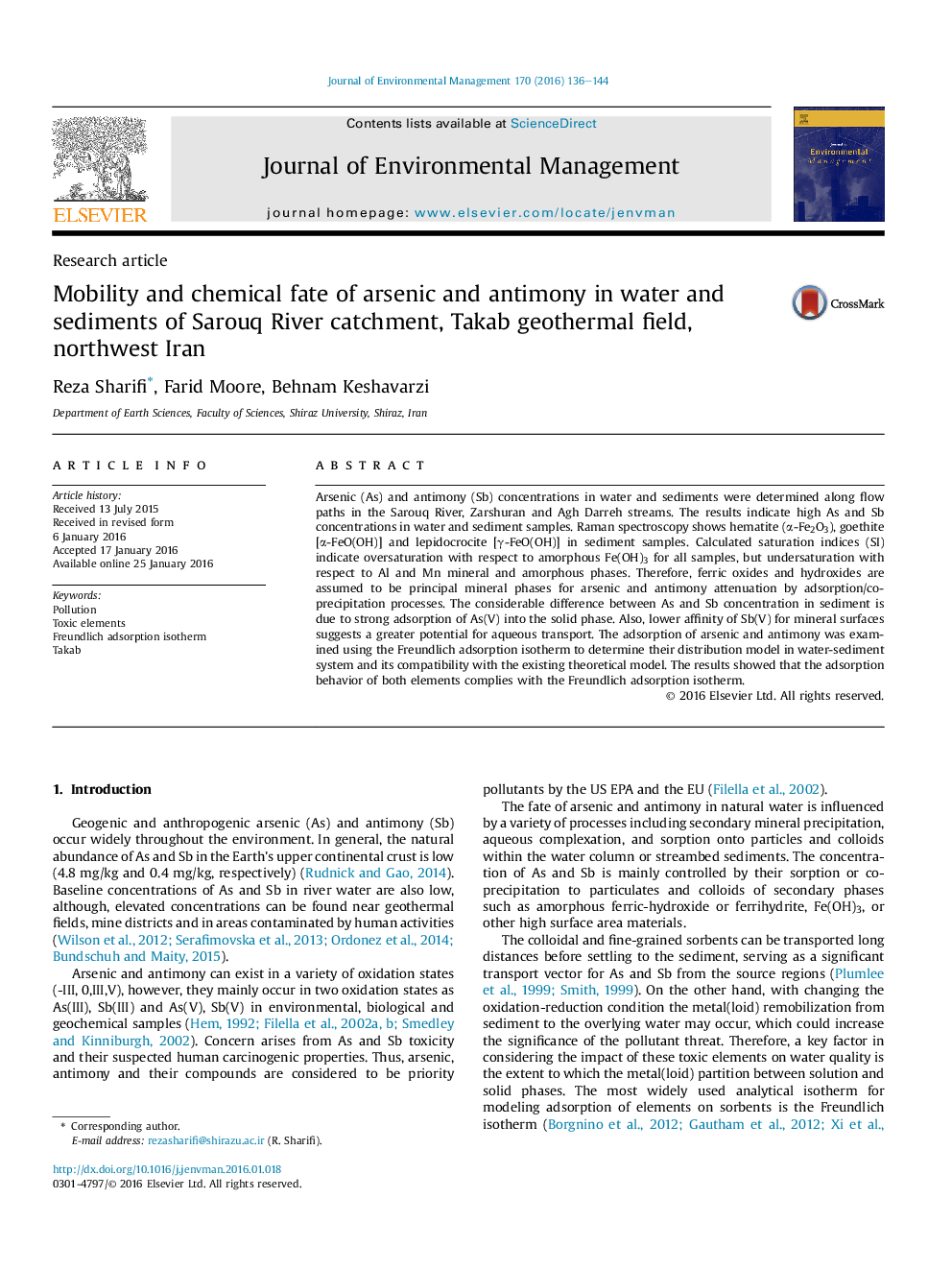| Article ID | Journal | Published Year | Pages | File Type |
|---|---|---|---|---|
| 7480932 | Journal of Environmental Management | 2016 | 9 Pages |
Abstract
Arsenic (As) and antimony (Sb) concentrations in water and sediments were determined along flow paths in the Sarouq River, Zarshuran and Agh Darreh streams. The results indicate high As and Sb concentrations in water and sediment samples. Raman spectroscopy shows hematite (α-Fe2O3), goethite [α-FeO(OH)] and lepidocrocite [γ-FeO(OH)] in sediment samples. Calculated saturation indices (SI) indicate oversaturation with respect to amorphous Fe(OH)3 for all samples, but undersaturation with respect to Al and Mn mineral and amorphous phases. Therefore, ferric oxides and hydroxides are assumed to be principal mineral phases for arsenic and antimony attenuation by adsorption/co-precipitation processes. The considerable difference between As and Sb concentration in sediment is due to strong adsorption of As(V) into the solid phase. Also, lower affinity of Sb(V) for mineral surfaces suggests a greater potential for aqueous transport. The adsorption of arsenic and antimony was examined using the Freundlich adsorption isotherm to determine their distribution model in water-sediment system and its compatibility with the existing theoretical model. The results showed that the adsorption behavior of both elements complies with the Freundlich adsorption isotherm.
Related Topics
Physical Sciences and Engineering
Energy
Renewable Energy, Sustainability and the Environment
Authors
Reza Sharifi, Farid Moore, Behnam Keshavarzi,
